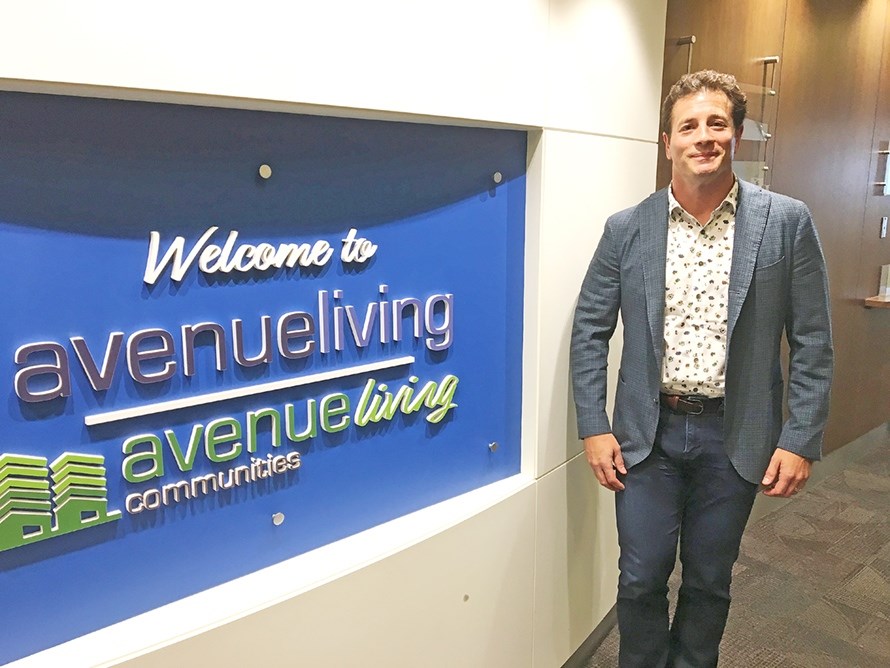Seven years into a recession with unemployment reaching record highs, sales of multi-family assets in big-city Alberta have ground to a near standstill and real estate agents say the market is just as grim in secondary markets.
“Once you get past Red Deer, the market falls off the table,” said Bradley Gingerich, head of the apartment property team at Marcus & Millichap in Edmonton.
But this just means it is a prime time for agile, small investors, according to two of the biggest and most successful landlords in the province. Both have perfected a go low and get big strategy that has allowed them to thrive despite Alberta’s economic headwinds over the past 20 years.
As others are seeking an exit, the two giants are buying, based on a rock-solid faith in the Prairie economy and Canadian workers.
In July, Bob Dhillon, founder and head of Calgary-based Mainstreet Equities Inc., paid $30.5 million for a 188-unit rental townhouse development in northwest Calgary, buying it for nearly $1 million below assessment value from Canadian Apartment Property Real Estate Investment Trust.
It was the biggest multi-family deal – and one of only eight sales – in the city during the third quarter of this year.
Dhillon has a counterintuitive strategy that involves buying lower-income rental buildings at a low price, renovating them and raising the rents. He brushes off the current angst about the economy, falling immigration or low oil prices.
“Real estate is a long-term play, you can’t make decisions based on a quarter-to-quarter basis,” Dhillon told Western Investor. He expects a surge in immigration, employment and Alberta resource values post-pandemic.
Avenue Living, also based in Calgary, started in 2006 and has since grown from a single $3 million, 24-unit rental building buy in Brooks, Alberta, to a company with $2 billion in assets, including 450 multi-family buildings with approximately 10,000 rental units across the three Prairie provinces.
“The success we have achieved is based on investing in the every day,” explained Avenue Living founder and CEO Anthony Giuffre.
“We invest in what we refer to as work-force housing. These are the B and C-class apartment buildings we all drive by every day that house essential workers. These are the frontline workers that are the fabric of the Canadian economy. And they always pay their rent.”
All during the current pandemic, more than 95 per cent of Avenue Living tenants paid the rent, similar to Mainstreet’s experience. Like Mainstreet, Avenue Living began face-to-face discussions on rental assistance with their tenants early in the pandemic before any governments got involved.
Dhillon, who has taken Mainstreet from a 22-cents-a-share launch on the Toronto Stock Exchange in 2000 to a $65-per-share behemoth with $2.2 billion in assets and 14,000 rental units, also maintains that it is smaller, older apartment buildings that are the best foundation of a multi-family portfolio.
His target tenants, which he said are legion, are those able to pay $1,000 or less for rent. “We are all about affordable housing,” Dhillon said.
Dhillon and Giuffre share doubts about the current new purpose-built rental towers ramping up across western Canada. Rents required for the fancy new towers are often not affordable for average Canadians, Dhillon believes. “The developer may need $2,600 per month for a one-bedroom, but local wages are not high enough to afford it,” he said.
“We are not into shiny new things,” Giuffre said. He argues that, aside from large real estate investment trusts other deep-pocket institutional players, investor math doesn’t work for new purpose-built rentals.
“If you build something that needs $3 per square foot in rent but the market can only yield $1.50, someone has to subsidize it,” he said. “That’s not where we play. We need to have rents equal to what our tenants can afford.”
Avenue Living rents average $1,000 per month, which Giuffre said is affordable to workers right across the Prairies, particularly in the strong agriculture sector, which he said underpins the economy.
2021 outlook
Over the past two decades – as Alberta was hit with the 2008 financial crisis, the 2014 oil price crash and then the global pandemic - Mainstreet and Avenue Living have maintained double-digit revenue growth. Both companies also continuie to invest in multi-family assets, confident that the Prairie rental market will thrive post-pandemic.
“There are only 2.2 million purpose-built rental apartments in Canada and the federal government wants to raise immigration to 1.2 million people over the next three years,” Dhillon noted.
He added that near-free money is a catalyst for multi-family investing. Using Canada Mortgage and Housing Corp. mortgage insurance, investors can secure 10-year terms as low as 1.6 per cent, with five years terms at 1.3 per cent – sometimes even less – when purchasing buildings with five or more rental units.
The business model for both Mainstreet and Avenue Living involves buying older properties and conducting necessary improvements, adding value to the asset by making it more attractive for current and potential residents.
It is a simple, proven formula, Giuffre said, that any investor can use.
“There’s still lots of room in the Prairies for multi-family investors,” Giuffre said, “whether you're buying a single asset or building a portfolio.”



